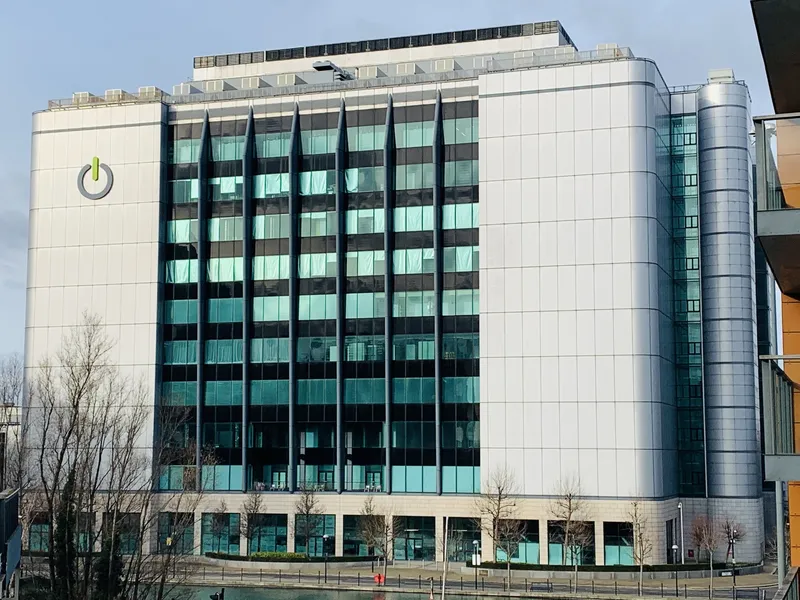Exploding DCs
The data centre market is jumping with both feet into the structured debt capital markets. As a sector with seemingly limitless demand for its services, akin to renewables a few years back, getting the funding is more important than whether a few basis points have been shaved off the cost of debt. The introduction of AI into the equation simply adds to the needs. Maybe one day data centre owners will simply have the funding to bolt an offshore wind farm onto their projects to ensure the supply of green power.

A quick run through of PFI's editorial coverage since the start of the year reveals that US$12bn of structured debt has been raised by the data centre (yes center!) sector in 2024 – in all regions and across the loan and bond markets.
Two sponsors stand out, both backed by private equity – Vantage Data Centers and EdgeconneX. Vantage is raising a €600m asset-backed securitisation (ABS) at the moment on assets in Cardiff UK, it has financed a US$3bn loan for its US projects, raised a US$64m loan in Taiwan and a €270m loan in Italy. On top of that it has raised a whopping US$6.4bn in new equity from a deal led by alternative asset manager DigitalBridge and technology investor Silver Lake, plus €1.5bn from AustralianSuper.
EQT-backed EdgeConneX has raised a US$1.4bn loan backing its Indian joint venture with Adani and a €1.75bn loan on its European assets.
They are not alone. Brookfield late last year bought France's Data4 for €3.5bn from AXA IM backed by debt. Blackstone and its data centre arm QTS entered a US$7bn joint venture with Digital Realty earlier this year to develop four hyperscale data campuses in Frankfurt, Paris and Northern Virginia. Then in the single asset development sphere, Blackstone bought the former Britishvolt gigafactory project site in Teesside in the UK for £110m to build a £10bn hyperscale data centre campus.
When it comes to raising debt to back these huge investments, the deals tend to be bespoke with the asset class having started off in the ABS and real estate commercial mortgage-backed securities (CMBS) space in the US before taking on cashflow project finance characteristics. Structured financing however, which ever route is chosen, comes at a price.
The Vantage ABS deal is a first in Europe, following on from various ABS deals in the US including three by Vantage. US data centre company Equinix pulled a corporate €500m euro 2033 bond issue in March after Hindenburg Research disclosed a short position in the company. The expected €500m deal had, until then, been proceeding well. After books had opened at 135bp–140bp over swaps, orders reached north of €1.3bn leading to a price revision to guidance of plus 115bp.
By contrast, the Vantage ABS deal could face a premium factored in for the structure, illiquidity and novelty. Market sources are talking about a spread in the region of the low-to-mid 200s over Gilts. The deal has both a loan to value metric, 54.7% on a site value of £1,1bn and a debt service cover ratio of 1.61x. Additionally, for structuring purposes it has some cash sweeps, some amortisation and one major AAA tenant paying 70% of the rent. The two Cardiff assets are operational.
For a more project finance leaning approach. AdaniConneX has just signed its US$875m loan, its second greenfield data centre financing in India in a year. An accordion facility takes the deal to US$1.44bn. The loan has a tenor of seven years and is priced at an interest margin of between 300bp and 320bp above SOFR.
Project finance supports include the fact that the three data centres concerned are fully contracted to Microsoft in US dollar-denominated contracts and an "innovative solution of a syndicated guarantee-backed assurance programme in sync with the projects’ procurement strategy". This includes some guarantees, or back-stops, toward the letters of credit for the procurement contracts.
Currently structured finance deals rely on top tenants to cover most if not all of the rent. Rating agency KBRA said last week that the ABS and CMBS market in the US totalled US$16bn split between one or two tenant hyperscale transactions, 64%, and co-location transactions, 36%, which have a diversity of tenants. If the market grows exponentially, it is possible the co-location transactions could move into the mainstream project finance arena.
Fitch said last month that the key risks influencing credit ratings in the sector include contract renewal, technological obsolescence, the timing of cashflows to repay debt, leverage ratios and supply/demand fundamentals. But there is one more factor – power.
AES earlier this year hosted a webcast where they assessed the challenges of meeting the equivalent of 45GW of renewable demand that data centres will need to grow by through to 2030 in the US alone. Power-hungry data centres are expected to grow from their current 2.5% to up to 7.5% of US total electricity consumption by 2030, according to Boston Consulting Group.
It is interesting then that when selling the Britishvolt site in the UK the local council said "the Hyperscale Data Centre Campus will be a heavy power user so the project is conditional on a power solution; as such constructive discussions have taken place between Blackstone, QTS, NCC, National Grid and power providers". CCGT or offshore wind?






